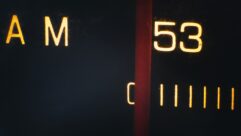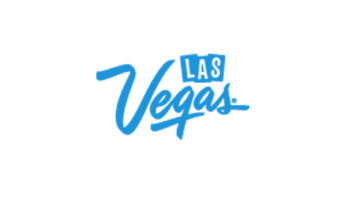In this ongoing series, we interviewing authors of the 11th Edition of the NAB Engineering Handbook. This time, Doug Irwin speaks with Richard Rudman.
�
Doug Irwin: You were the head of Engineering for KFWB radio (Los Angeles) during its long period as an all-news station. As such, emergency planning was a must. Can you tell us any �war stories� during which all the planning and advance work paid off?
Richard Rudman: KFWB did not lose air time after the Northridge Quake at 4:31 on the morning of Jan. 17, 1994, thanks to Preparedness (and luck). Momentary power failures before the power went out started the generators at the KFWB studio in Hollywood and the transmitter site in east LA. When the power went down for real, the transfer switches reacted instantly. KFWB was one of the few broadcasters on the air for the public to tune to and arguably was the only source of live local information for the first 18-30 minutes.�
KFWB was purchased by Group W, a division of Westinghouse Electric, in 1967. It flipped to All News in 1968. Backing from Engineering Management at Group W�s New York Headquarters led to designing a new home for KFWB that survived the Northridge quake. One minor crack in the back wall, and a clock that fell off a wall were the only effects. For example, equipment racks were all secured at the top to prevent them from swaying and all equipment in the racks was installed with service loops so no wiring could snap. A new transmitter building designed with the help of New York was put into service in 1981 that won me a reputation for overdesign that the financial people were not happy with but I was rather proud of.
My passion to have KFWB ready to survive came out of getting to know some of the top emergency preparedness experts in the country that worked in and for Los Angeles County through my involvement first in the old Emergency Broadcast Service (EBS) that preceded EAS. My exposure to the top quake experts at CalTech and the USGS was to me the equivalent to going through a multi-year advanced degree program in emergency preparedness for a wide range of risks. My give-back was to help the emergency management community with skills I could contribute. I chaired the Telecommunications Advisory Group for the Emergency Preparedness Commission for Los Angeles County for a number of years until I moved to Ventura County. Good relationships should never be one way streets.
�
Irwin:In Radio magazine we�ve spoken much about alternate transmitter sites. In chapter 3.6, �alternate sites� are discussed. Was there a plan in place to transmit KFWB from another site, should the usual site become unusable?
Rudman: Not always possible, but great if you can find the land, backing and money to do it. I could not. Located on a hill in East Los Angeles, KFWB (980) shares a transmitter site with KLAC. (570) Daytime the two stations are diplexed on a single tower. My backup plan had to take into account anything that could hurt the towers or the diplexer that could make it impossible to broadcast. I convinced Management that we should be prepared to set up an emergency antenna on site and feed it with an emergency transmitter with neither depending on the existing towers or building. I bought an aerostat helium balloon, a helium tank, a war surplus field long wire antenna, insulated guy lines for the balloon, and build a Nautel 1 kW. solid state transmitter into a small U-Haul style trailer. The trailer also housed a custom build tuning unit that allowed matching the transmitter to the antenna. I never had a chance to deploy the antenna and trailer for actual emergency use, but it was ready.
�
Irwin:Realistic risk assessment is also covered in the chapter. What do you feel is the limit to which a station should go, to serve listeners? Can every imagine risk be planned for?
Rudman: I know for a fact that people at risk who tune in during emergencies come back. KFWB got a rather nice ratings bump after the Northridge quake. That�s how people at risk say �thank you� to broadcasters who devote the time and resources to be there for them.
No, you cannot and should not try to plan for everything. It will just make your head hurt. You have to pick your risk battles by analyzing how each could take your facility off the air and/or make it impossible for the people who staff it to do their jobs, and doing what you can to prepare. Part of this is making sure you have at least two weeks of food, water, and other emergency supplies to keep your people going. This includes but is not limited to temporary bathroom facilities and a better than average stock of emergency medical supplies. Special tools and supplies include shovels, gloves, and dust masks. You, along with your audience, may be on your own for a long time. Think about working out contracts with suppliers for things you cannot stock and store in advance like generator fuel. You also need to have an overall facility emergency plan in place so when your ultimate risk slaps you in the face, everyone knows where to go and what to do without having to call them. You may even decide to recommend your management talks to your competition to work out emergency partnerships to use each other�s studios or transmitters for combined emergency operations. Think special security measures for your facility and your people too. Think out of the box because your box may be destroyed.�
�
Irwin:What�s the most important takeaway from chapter 3.6, do you feel?
Rudman: The day of the emergency is not the day to meet the emergency management experts in your area or to learn from them. They can educate you on risks and you can help cement relations with them to form effective partnerships so your stations can, if your management lets them, become part of the entire emergency response partnership that need to come together when communities are challenged by events that can literally rock their world, and yours along with it.
The biggest strength we have in our profession is that we do not recognize the walls that business competition likes to erect. We know each other and we help each other during good times and bad. This goes to lending other engineers parts and maybe even an extra set of hands when they need help, and accepting in good grace help from others when you need it. We are a tiny fraternity of men and women who have chosen a line of work that at its best can help save lives and property in ways that no other community resource can.
�












